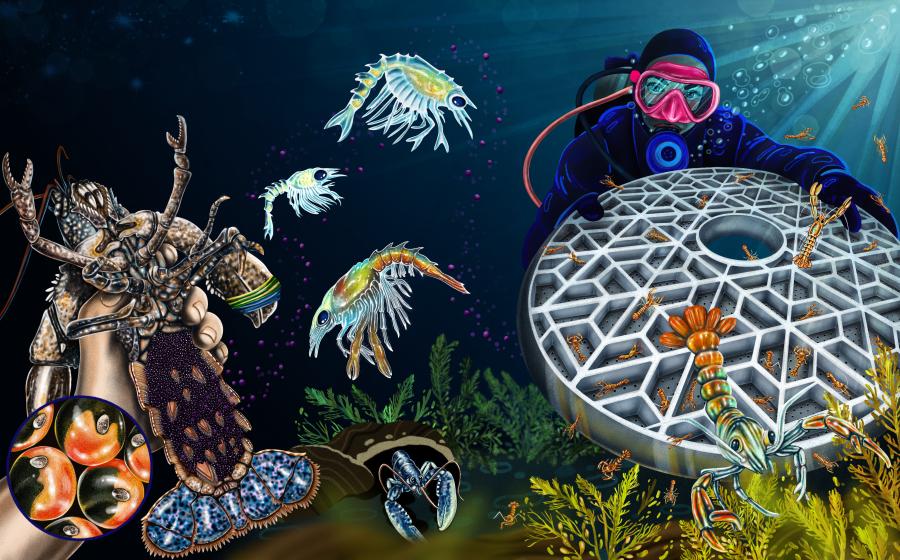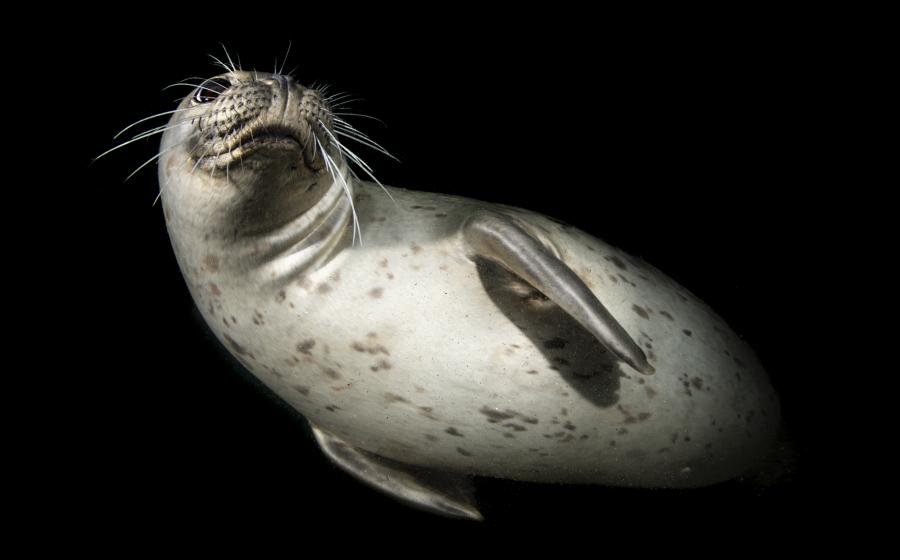Christy and Brice Semmens Honored as Scuba Diving Sea Heroes

Courtesy Christy and Brice SemmensDevoting their lives to saving one of the Caribbean’s most iconic fish.
It was a summer of new beginnings. In 1993, Christy Pattengill and Brice Semmens were in college and Nature Conservancy interns when they met in the Florida Keys. At the same time, Reef Environmental Education Foundation (REEF) in Key Largo was establishing its now-legendary Volunteer Fish Survey Project; the pair worked on early testing and development. They stayed involved with the program — and each other — and Christy eventually was hired as REEF’s first staff scientist. Three ocean-loving kids later, Brice is director of the California Cooperative Oceanic Fisheries Investigations and an associate professor at Scripps Institution of Oceanography, UC San Diego, and Christy Pattengill-Semmens is director of science at REEF. The pair has devoted fifteen years to serving as lead scientists for a successful effort that has brought together government, science and fisheries to save the Cayman Islands’ Nassau grouper, a project that could be replicated across the Caribbean.
Could you give us a snapshot of REEF’s Grouper Moon Project, which is attempting to protect and resurrect historic aggregations of Nassau grouper?
Nassau grouper are a critical part of the ecological and social fabric of the Caribbean. As a top reef predator, the species plays an important role in the ecosystem. And, for more than a century, the species supported traditional fisheries from Bermuda to the Mexican Caribbean. Unfortunately, the modern era of fishing has created a crisis for the species. Throughout its range the species forms spawning aggregations that are highly predictable in both time and space. Historical fisheries that lacked the benefit of motors, refrigeration, or commercial markets sustainably targeted these aggregations. Improvements in technology and commerce ultimately turned these fisheries unsustainable. Today, very few Nassau grouper spawning aggregations remain.
The Cayman Islands are a hope spot for the species. Like most of the Caribbean, the Cayman Islands had fished all known Nassau grouper spawning aggregations to complete collapse by the turn of the millennium. However, progressive management of the species over the last 15 years, coupled with a unique research and education partnership between the Cayman Islands Department of Environment, Reef Environmental Education Foundation, and several academic institutions (the Grouper Moon Project), has resulted in a remarkable turn-around in the species. In just over a decade, the population of Nassau grouper on both Little Cayman and Cayman Brac has tripled. Today, Little Cayman boasts the largest remaining spawning aggregation in world.
IUCN has recently reclassified Nassau grouper from endangered to critically endangered — is it too late to save this fish?
In a word: no. Through our work on Grouper Moon, we have demonstrated that progressive management, action-oriented research, and community outreach can foster rapid recovery for the species. The challenge now is to replicate these successes throughout the range of the species — as more and more countries take action to protect Nassau grouper (e.g. Bahamas, Turks and Caicos), the likelihood of a Caribbean-wide conservation success story grows.
Grouper Moon is described as a model for natural resource science — what does that mean exactly, and how and where do you hope to see that model applied?
Our research is built to answer questions that ultimately improve the odds of recovery for the species. Answering questions like “how are grouper populations responding to management” or “where are the new baby grouper coming from?” have been critically important in supporting the Cayman’s progressive and adaptive management of the species. Beyond research, our extensive education and outreach programs support the Cayman government’s efforts to inform the public about management action and successes. In short, we aren’t just doing research on a dying species — we’re figuring out how to save it.
How important are no-take zones for conservation, and why are they such a tough sell if effective?
Marine protected areas are a potent management tool for conservation, but they aren’t a panacea. In the Caymans, for instance, our research suggested that seasonal closures, in addition to marine protected areas, would simplify regulations and ease the burden on enforcement. In addition, marine protected areas are often difficult to implement because, fundamentally, they impinge on the rights of fishermen. Most fishermen are willing to give up some freedoms in order to preserve resources or make opportunities for fishing better. However, in many instances, marine protected areas are not well justified. Or, the justification is not well communicated. The key to selling marine protected areas is to plainly communicate the benefits of such protected areas.
The Grouper Moon Project was designed to generate the information necessary to justify (or negate) the need for spawning site protections. In addition, we created an education and outreach program to disseminate our findings, and conducted the work through a strong collaborative partnership. This approach has worked very well.

Courtesy Josh StewartChristy (left, foreground) and Brice Semmens talk to classroom students via a live underwater feed.
What do you view as the greatest challenges in marine conservation today? How are these challenges reflected in your own work?
Balancing conservation and human use in the marine environment. It’s easy to take positions like “no fishing ever” or “no marine protected areas anywhere.” It’s much harder to develop management strategies that balance competing needs. Our work focuses on objective science — we aim to support conservation, but we recognize that fisheries are an irreplaceable part of the social and economic fabric of the Caribbean.
What's been your most satisfying moment?
Just last year, watching a river of critically endangered Nassau grouper flow along the western shelf edge of Little Cayman during spawning season, and knowing that we had a part in preserving the spectacle.
What's been your most surprising moment?
Finding a grouper on the aggregation site with what appeared to be a massive shark bite on its back that had long since healed over. How did the bite miss the backbone? How did the grouper survive? Wonders never cease. We saw him several years in a row, and named him “Lucky” after our good friend and owner of the Southern Cross Club, Peter Hillenbrand.
Who are your Sea Heroes?
The recreational divers that take it upon themselves to learn natural history, and volunteer their time to document and monitor our marine resources. Reef Environmental Education Foundation (REEF)’s volunteers are at once amazing natural historians, and some of the best divers you could hope for as dive buddies.
What can divers and our readers do to help further your work?
Don’t just dive, dive with a purpose. Make data. Survey the marine environment while on your dives, and submit those data to a citizen science program like REEF’s Volunteer Fish Survey Project. Diver citizen scientists have been a key part of some of the most important conservation science discoveries over the last few decades, including the lionfish invasion in the Caribbean and sea star wasting disease along the west coast of the US. And, make informed seafood choices, even while on vacation. Ask questions like “what kind of fish is in your tacos?” Informed seafood consumers are powerful, and if we all ask these questions, seafood will be both more sustainable, and more delicious. And, less endangered.










